Transforming a child’s room into a magical and fun space doesn’t have to be expensive or overwhelming. Whether your little one is a budding artist, an athlete, or simply someone who loves to explore, there are countless ways to create a vibrant and functional environment that they’ll adore. From budget-friendly decor ideas to creative DIY projects, this guide offers everything you need to design a kids’ room that’s both fun and practical. Discover how to incorporate trendy themes, maximize small spaces, and make the most out of what you already have. Whether you’re decorating a room for a boy, a girl, or sharing a space with siblings, these tips will help you create a space that feels uniquely theirs. Let’s get started on turning their room into the ultimate play and sleep haven!
Key Takeaways
– Transform Your Child’s Room: Create a playful and organized sanctuary with budget-friendly decor ideas that inspire creativity and functionality.
– Essential Kids’ Room Setup: Ensure a safe, private space with must-have items like a comfortable bed, ample storage, and a cozy reading corner.
– Personalized Spaces: Consider granting a 10-year-old their own room for improved sleep quality and enhanced mental well-being.
– Maximize Space Efficiently: Utilize smart storage solutions and multi-functional furniture to create a clutter-free, versatile play and study area.
– Fun and Functionality: Design a vibrant, kid-friendly space with tips on organization, decor, and layout that cater to both play and learning.
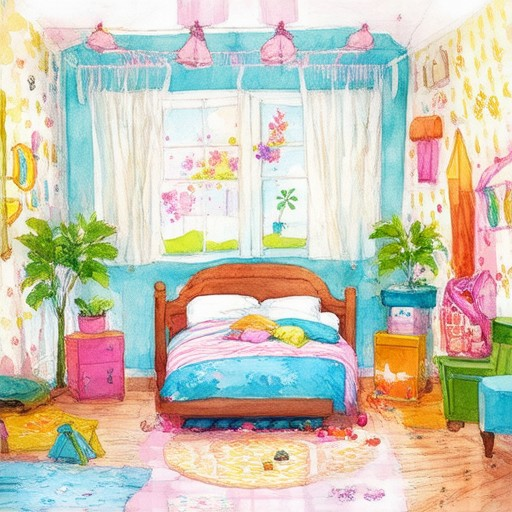
What Kids’ Decor is Trending Now?
Trending kids’ decor in 2025 emphasizes whimsy, functionality, and sustainability. Here’s what’s hot:
- Fantasy-Inspired Decor : Kids are drawn to magical themes featuring unicorns, dragons, and enchanted forests. These themes create vibrant and imaginative spaces perfect for play and relaxation.
- D.I.Y. Projects : Hands-on activities like customizing walls with murals or repurposing old furniture into creative storage solutions are gaining popularity. They encourage creativity and personalization.
- Space-Themed Elements : Celestial motifs, glow-in-the-dark stars, and planet-shaped decor are popular, sparking curiosity and a love for exploration.
- Sustainable Kids’ Decor : Eco-friendly options like recycled wood furniture and organic cotton bedding are in demand, promoting environmental consciousness.
- Interactive and Smart Decor : Integrating technology, such as smart lighting or interactive wall art, offers kids engaging ways to learn and play.
- Multicultural and Global Themes : Incorporating global cultural influences, like Japanese origami or African animal patterns, adds a unique touch to children’s spaces.
Explore these trends and more on our kids’ decor trends page for inspiration and projects tailored for young imaginations!
How to Make Your Kids’ Room Magical
To transform your child’s room into a magical haven, follow these steps:
- Choose a Theme : Select a theme that sparks imagination. Options include space adventures, enchanted forests, or under-the-sea explorations.
- Example : Paint the walls with a starry sky or ocean waves to bring the theme to life.
- Play with Colors : Use bright, vibrant colors that match the chosen theme. Pastel shades or bold, playful hues can create a lively atmosphere.
- Tip : Incorporate accent colors in bedding, curtains, and soft furnishings for a pop of color.
- Add Lighting Effects : Introduce fairy lights, glow-in-the-dark stars, or colorful lanterns to add a whimsical touch.
- Suggestion : Hang string lights overhead or place LED lights around the room for a magical glow.
- Organize with Fun Storage : Use colorful bins, themed baskets, or labeled boxes to keep toys organized in a fun and accessible way.
- Idea : Add a whimsical label maker or decoupage designs onto storage containers.
- Create a Reading Nook : Design a cozy corner with a bean bag, soft blanket, and a small lamp. Add a bookshelf with categorized books for endless exploration.
- Bonus : Include a basket for snacks and a flashlight to enhance the reading experience.
- Incorporate Interactive Elements : Add features that spark curiosity, like a chalkboard wall for drawing or a secret bookcase hiding a small drawer.
- Tip : Place a small table with a notebook and pencil nearby for journaling adventures.
- Add Personal Touches : Customize the room with artwork, photos, or even a nameplate. Personalized decor makes the space uniquely theirs.
- Example : Create a personalized growth chart or a map of their imaginary world on the wall.
- Set the Ambiance : Play calming, nature-inspired music or white noise to create a soothing environment.
- Idea : Use a sound machine with rain or ocean sounds to help them drift off to sleep.
- Accessorize with Magic : Include items like a magic wand, crystal figurines, or a small telescope to encourage imaginative play.
- Suggestion : Add a small collection of pretend items that fit the room’s theme.
- Make Their Bed Magical : Use a canopy bed or add bedding with fun patterns and colors.
- Tip : Place a small lamp or flashlight under the bed for a magical bedtime routine.
By combining these elements, you’ll create a magical space that sparks curiosity, creativity, and joy for your children.
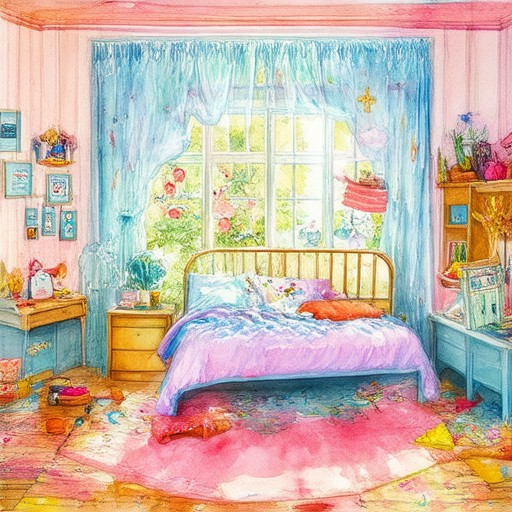
How to Make Your Room Cool for Kids
Keeping your child’s room cool and comfortable is essential for their well-being. Here are some effective strategies to achieve this:
1. Utilize Fans Strategically
- Ceiling Fans: Install or use ceiling fans to circulate air and reduce stuffiness. They are a cost-effective solution and do not take up floor space.
- Portable Fans: Consider portable fans that can be moved around the room or placed near the bed for targeted cooling.
- Smart Fans: Explore smart fans that can be controlled via apps, allowing you to adjust the speed and direction remotely.
2. Optimize Air Conditioning Usage
- Set Thermostat Lower: Program your AC to a lower temperature when your child is not at home during the day, saving energy while keeping the room cool in the evenings.
- Smart Thermostats: Use smart thermostats to remotely manage the temperature, ensuring the room is just the right balance when your child returns.
3. Implement Natural Cooling Techniques
- Open Windows Wisely: Open windows in the morning to let cool air in, then close them in the evening and use a fan to push hot air out.
- Blackout Curtains: Install blackout curtains to keep sunlight out during the hottest parts of the day, helping to regulate the room’s temperature.
- Insulation and Ventilation: Ensure your windows and doors are well-insulated and free from obstructions to allow efficient airflow.
- Dehumidifier: Use a dehumidifier to remove excess moisture, which can make the room feel warmer and uncomfortable.
4. Enhance Comfort with Tech Gadgets
- Oscillating Fans: Look for fans with oscillating features to cover a larger area and provide consistent cooling.
- Cooling Mattress Pads: Invest in cooling mattress pads or weighted blankets to help your child stay comfortable while sleeping.
- Smart Sleep Solutions: Consider smart beds that adjust temperature or use fans integrated with bedtime routines for added comfort.
5. Create a Personalized Comfort Zone
- Adjustable Bedding: Use breathable fabrics and lightweight bedding to help your child stay cool throughout the night.
- Comfortable Pillowcases: Choose soft, breathable pillowcases to enhance sleep comfort and prevent overheating.
- Room Temperature Pre-Cooling: Use programmable devices to cool the room slightly before your child arrives home, ensuring a pleasant environment upon arrival.
By combining these strategies, you can create a cooler and more comfortable environment for your child, ensuring they have a restful and enjoyable experience.
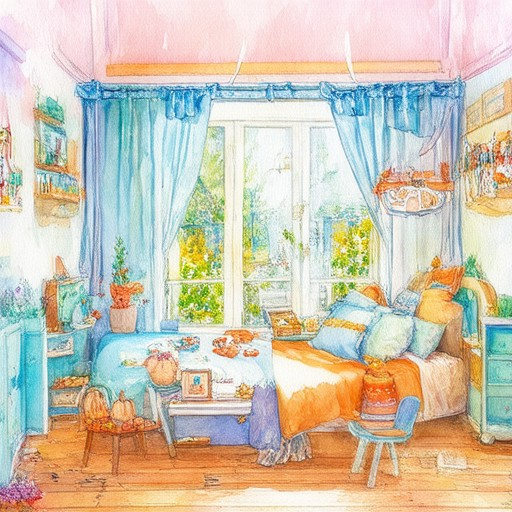
What Should Every Kids’ Room Have?
A kid’s room needs to be functional, safe, and conducive to play, learning, and relaxation. Here’s a breakdown of essential and optional items:
Essential Items
- Bed: A comfortable bed with plenty of pillows and a blanket.
- Dresser: For storing clothes and accessories.
- Toy Storage: Bins or cabinets to keep toys organized.
- Reading Corner: A cozy spot with a rug, a lamp, and a bookshelf.
- Art Supplies: Paper, crayons, markers, and a small easel.
- Study Area: A small desk and chair for homework or crafting.
- Lighting: A table lamp or overhead light for illumination.
- Play Area: Space for toys, dolls, and interactive games.
- Soft Seating: Bean bags, cushions, or a small sofa for relaxation.
- Safety Features: First aid kit, fire extinguisher, and window locks.
- Personalized Touches: Wall decals, growth charts, and colorful curtains.
- Nightstand: By the bed for bedtime routines.
- Family Command Center: A small chalkboard or whiteboard for notes.
Optional Add-Ons
- Trundle Bed: For extra guests or sleepovers.
- Drawers Unit: For seasonal clothing or extra storage.
- Bookshelf: To organize books, toys, and trinkets.
- Art Display: Hooks or frames for hanging child’s artwork.
- Desk Organizer: For keeping papers and supplies tidy.
- Outdoor Gear: Bike, scooter, or rollerblades for active play.
- Interactive Learning Tools: Flashcards, puzzles, or STEM kits.
- Door Lock: For privacy and security.
- Window Seats: For reading or playing quietly.
- Storage Bench: Under the bed for extra space.
- Sound System: For music or lullabies.
To maximize functionality, consider labeling drawers and shelves to help kids learn organization. Hooks on walls can be used for accessories like hats, jackets, or art projects. Keeping the room clutter-free ensures it remains inviting and safe for children of all ages.
Does a 10-Year-Old Need Their Own Room?
Whether a 10-year-old needs their own room depends on several factors, including their personality, developmental stage, and family dynamics. Here’s a breakdown of the considerations:
- Privacy and Independence:** Having their own room can provide a sense of privacy and independence, allowing them to explore hobbies, organize their belongings, and manage their schedule without interruptions. This can foster a sense of responsibility and contribute to their emotional well-being.
- Reducing Sibling Rivalry:** Sharing a bedroom can sometimes lead to sibling rivalry, especially if there are significant differences in personalities or preferences. This may result in arguments over shared space and resources.
- Personal Space for Sleep:** A separate room can help establish a routine and ensure adequate sleep, which is crucial for physical and cognitive development during childhood.
- Hobbies and Organizational Needs:** A dedicated space for hobbies, such as art, reading, or playing instruments, can help children maintain organization and focus, which is essential for their growth and learning.
- Mental Health Benefits:** Studies suggest that having their own room can contribute positively to a child’s mental health, reducing feelings of anxiety and stress associated with sharing space.
However, sharing a room can also have advantages, such as teaching cooperation, compromise, and shared responsibility. Ultimately, the decision should be tailored to the family’s living situation, budget, and the child’s unique needs and preferences. Open communication between parents and children can help determine what works best for everyone involved.
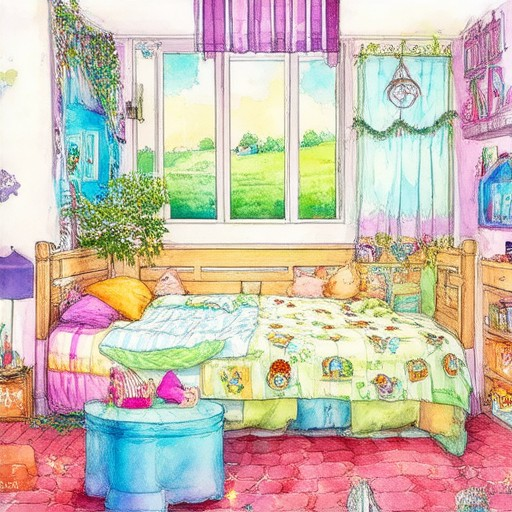
How to Maximize a Kids’ Room?
Maximizing a kid’s room involves clever use of space, organization, and thoughtful design. Here are some practical tips to make the most of your child’s bedroom:
- Smart Storage Solutions:** Use shelves, drawers, and bins to keep toys, clothes, and books neatly stored. Look for compact options like wall-mounted shelves or drawer organizers to save floor space.
- Multi-Functional Furniture:** Opt for pieces that serve multiple purposes, like a bed with built-in storage or a toy chest that doubles as seating. This helps reduce clutter and maximizes every inch of the room.
- Organized Play Areas:** Dedicate a corner to toys and activities, using a low shelf or bench for display. This keeps everything accessible yet out of the way when your child is playing.
- Flexible Bedding:** Use bunk beds or trundles to save space. Under-the-bed storage boxes are a great way to hide extra clothes or stuffed animals.
- Wall-Mounted Storage:** Install hooks or brackets on the walls to hang clothing, accessories, or artwork. This frees up valuable floor space and keeps items easily accessible.
- Natural Light:** Position windows or skylights to maximize sunlight, reducing the need for artificial lighting during the day. Use sheer curtains to allow light in while maintaining privacy.
By implementing these strategies, you can create a functional and enjoyable space for your child. Remember to keep the room colorful and personalized to match their personality, making it feel like their very own sanctuary.
For more DIY ideas and creative projects, visit us at Pravylo Project .

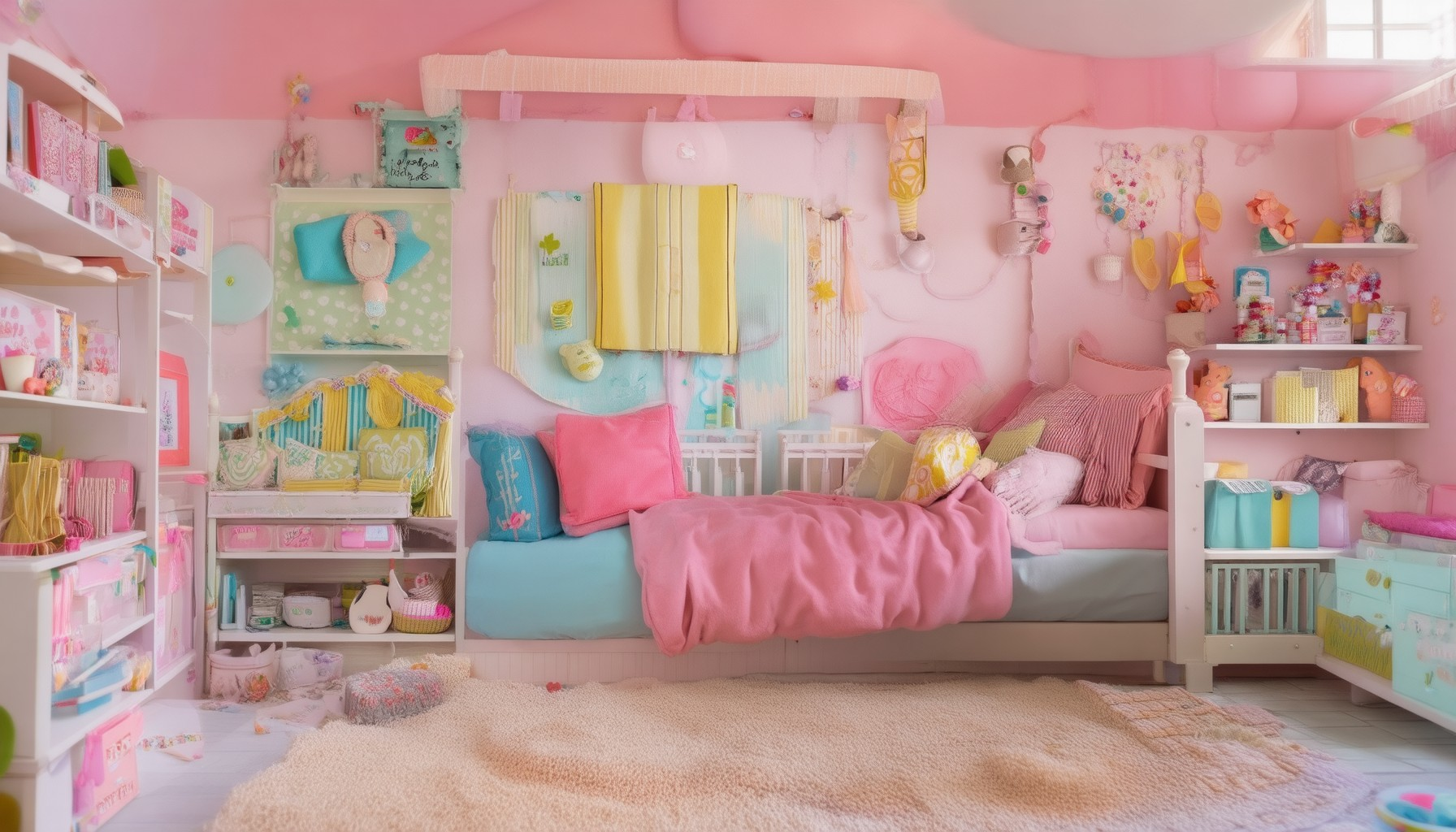



0 Comments